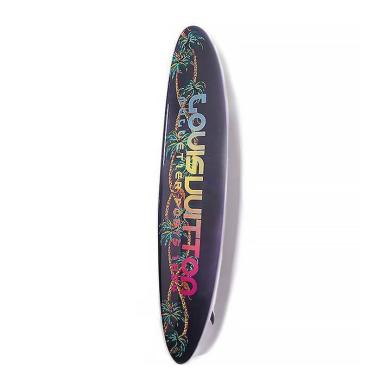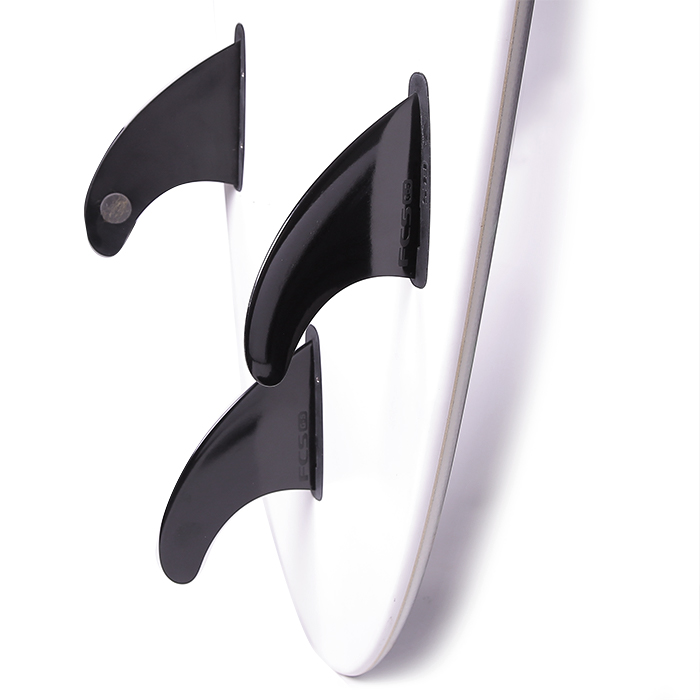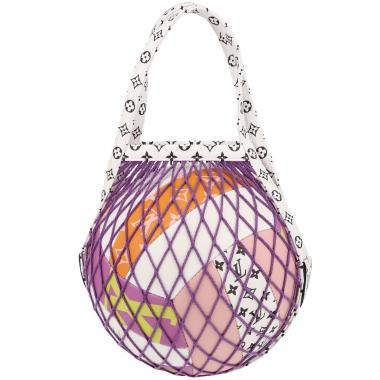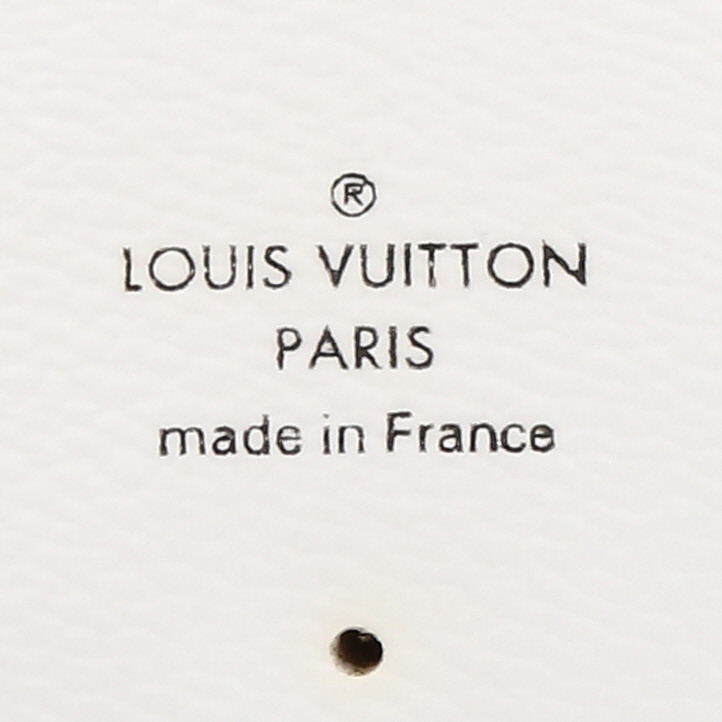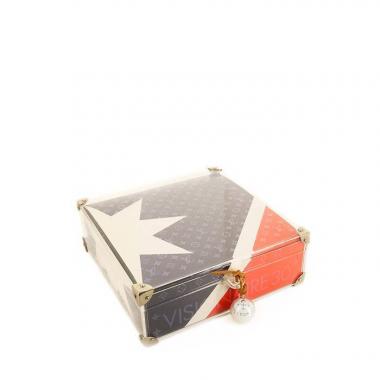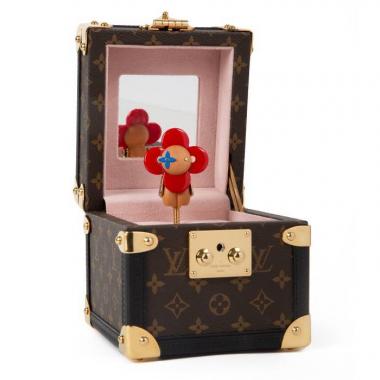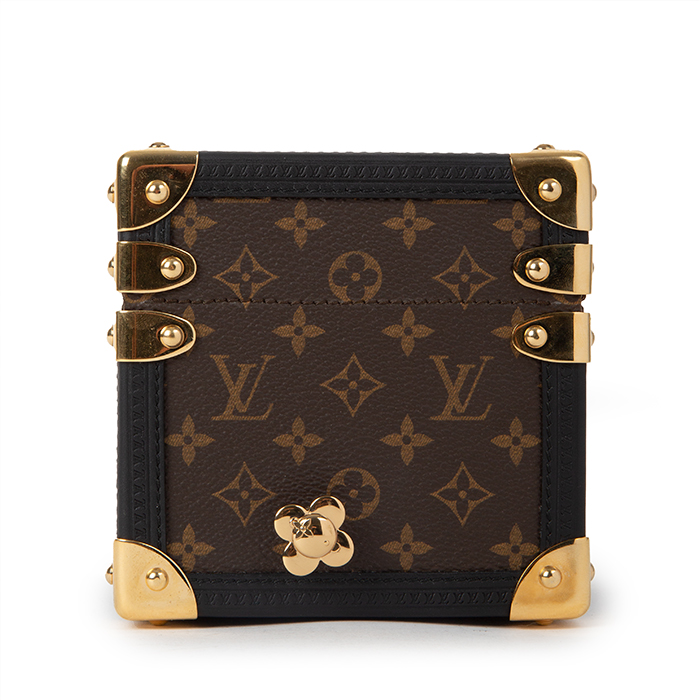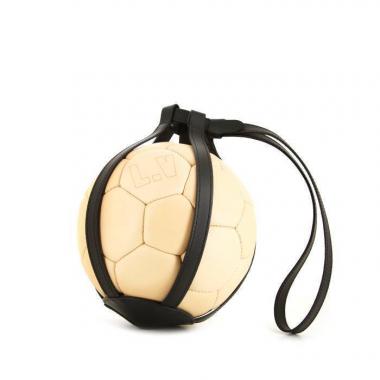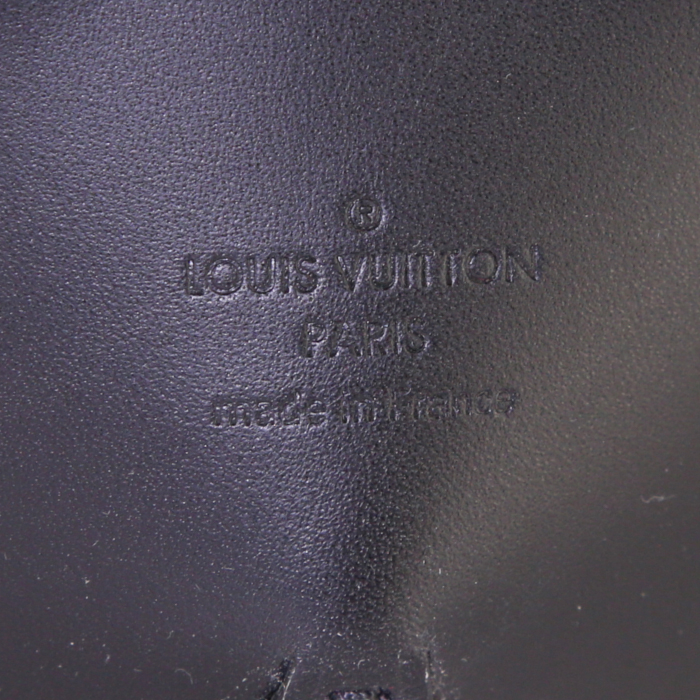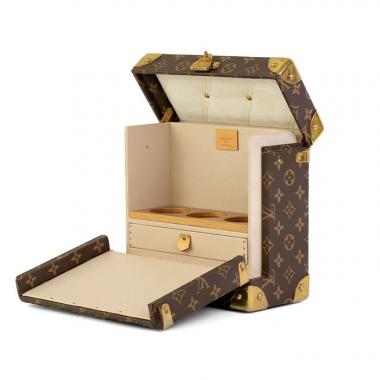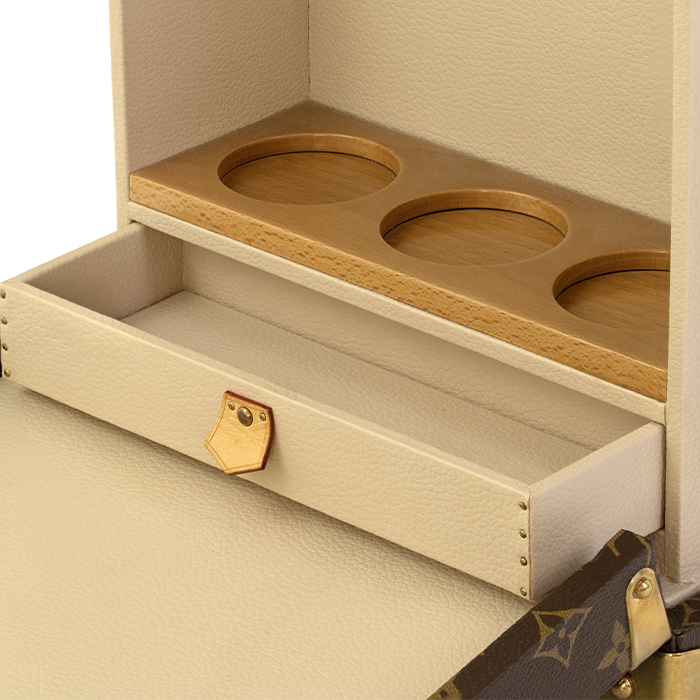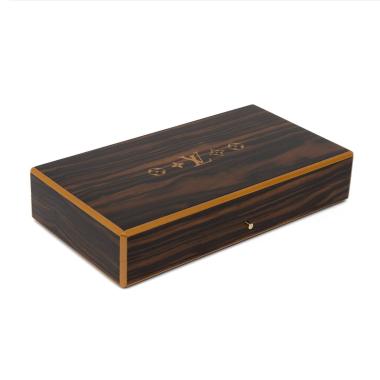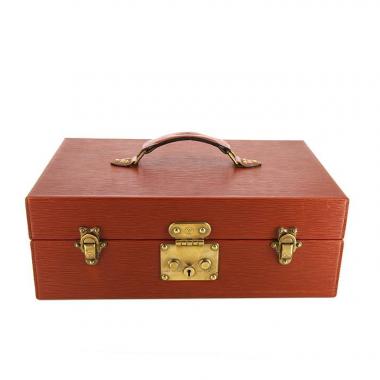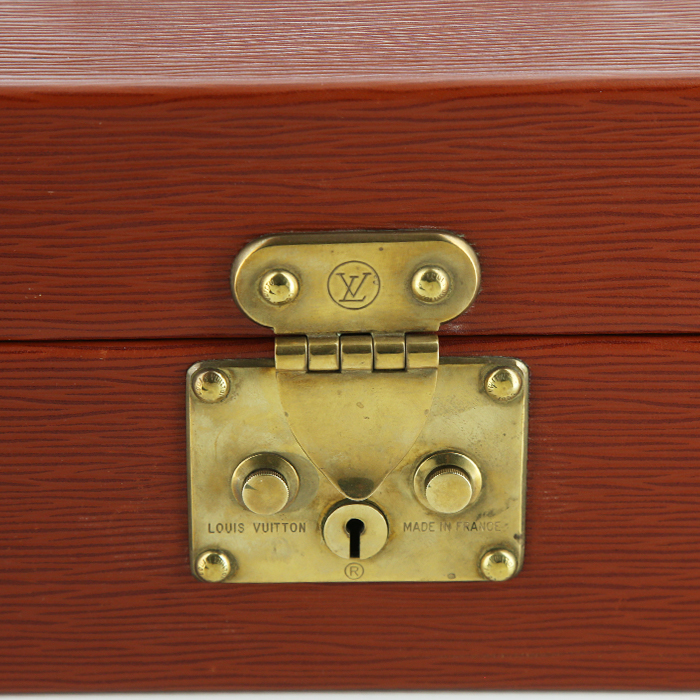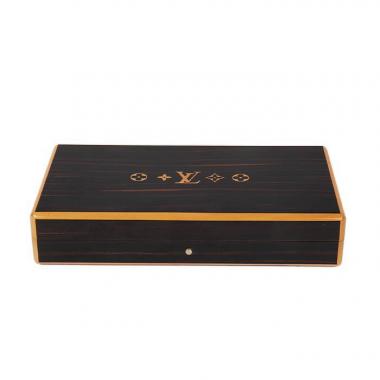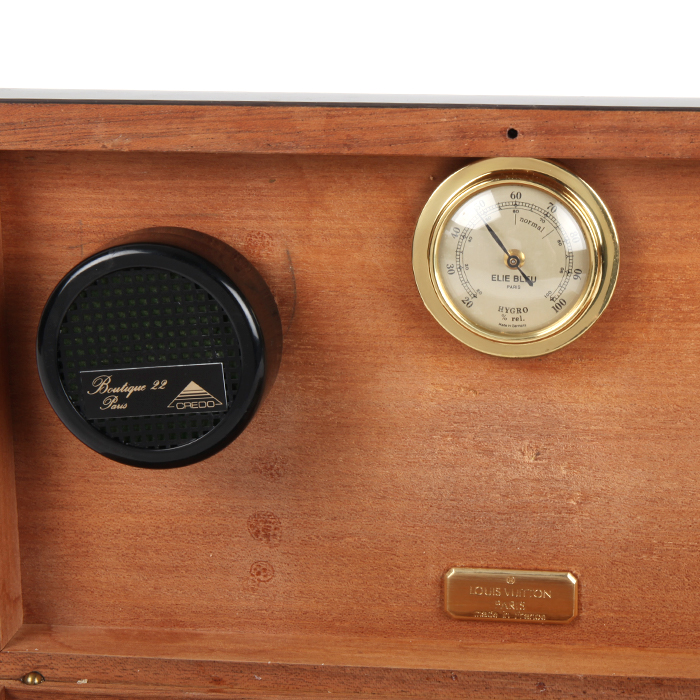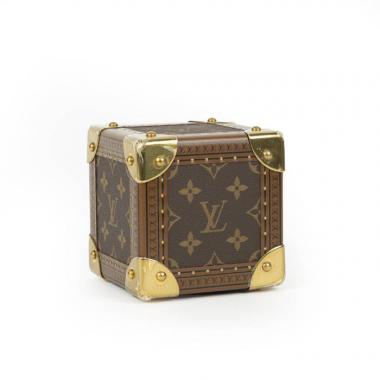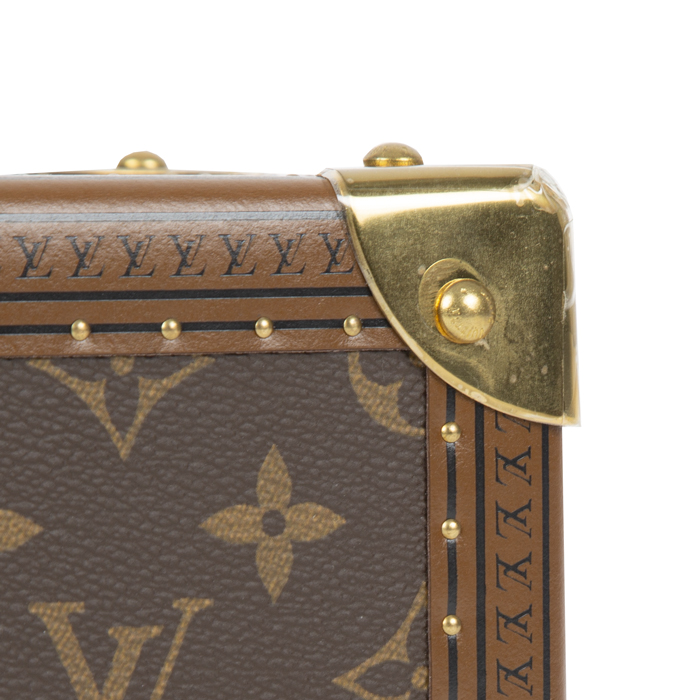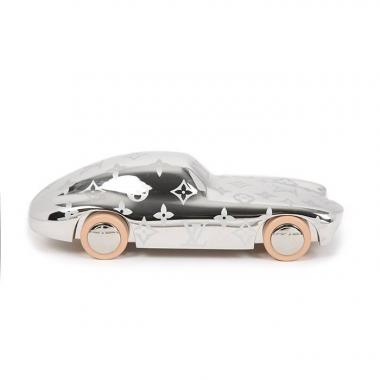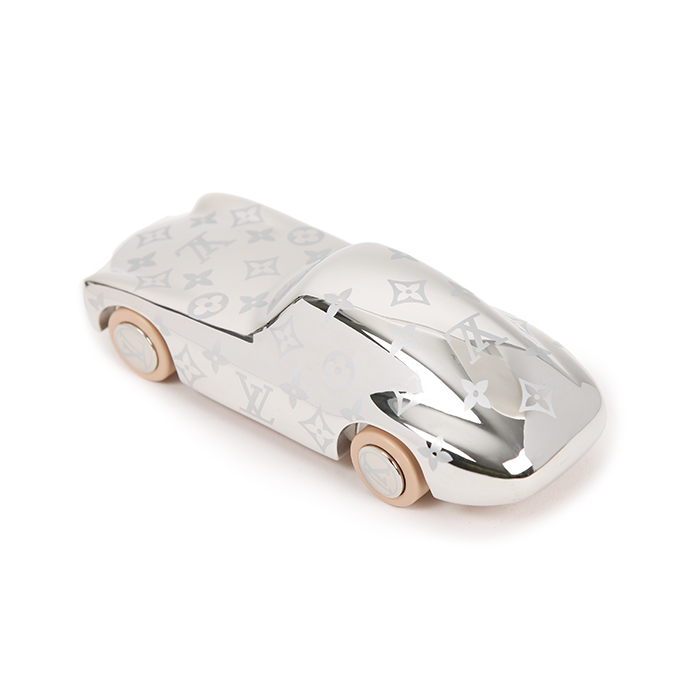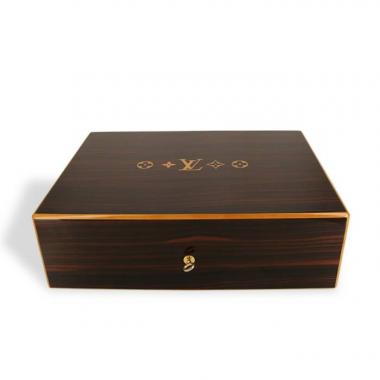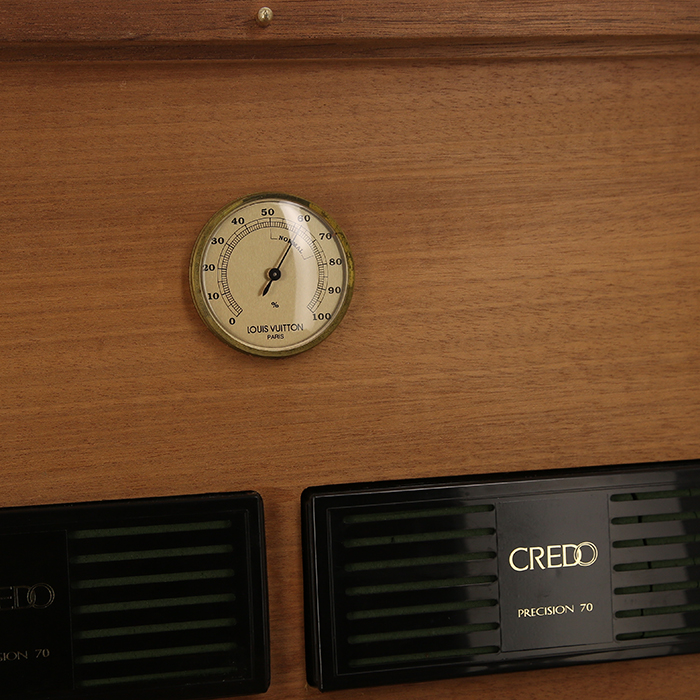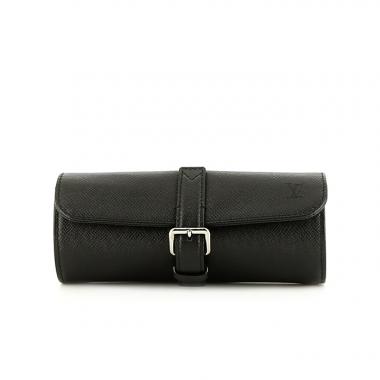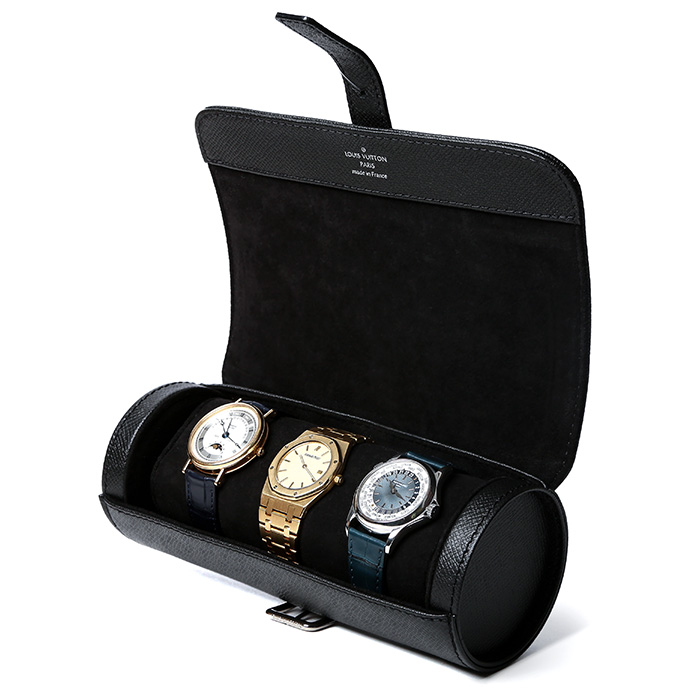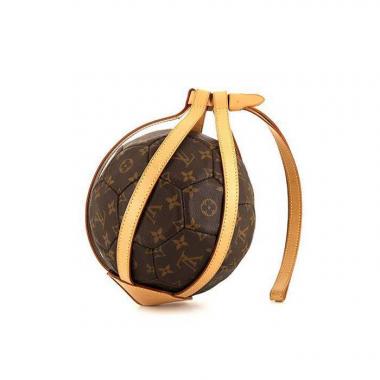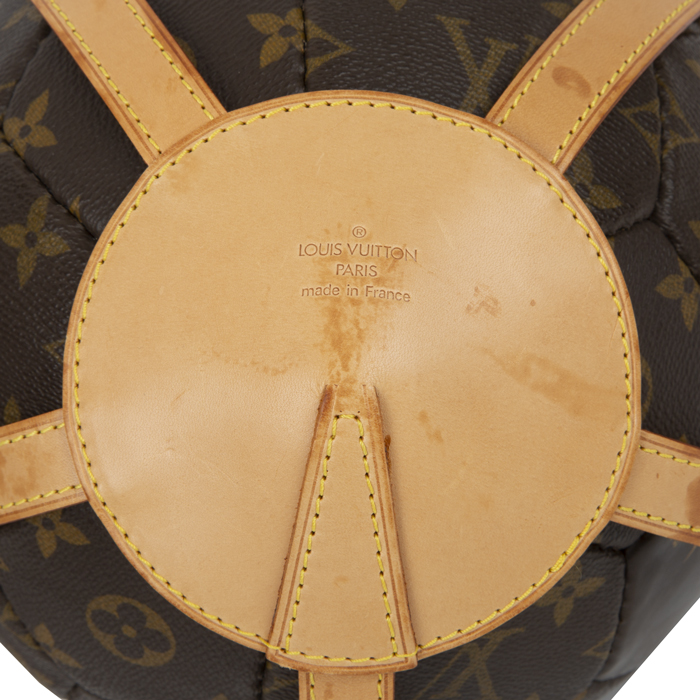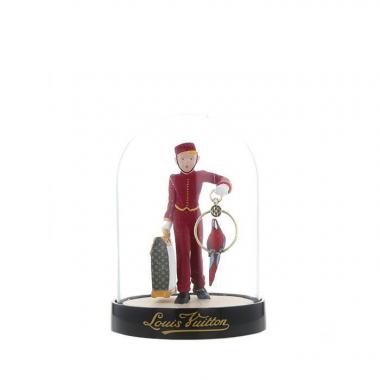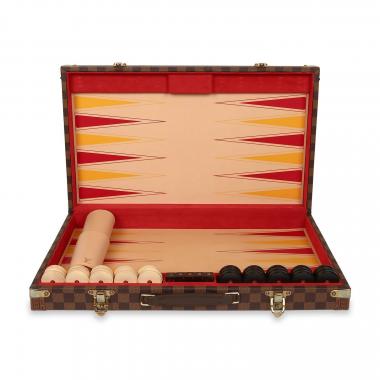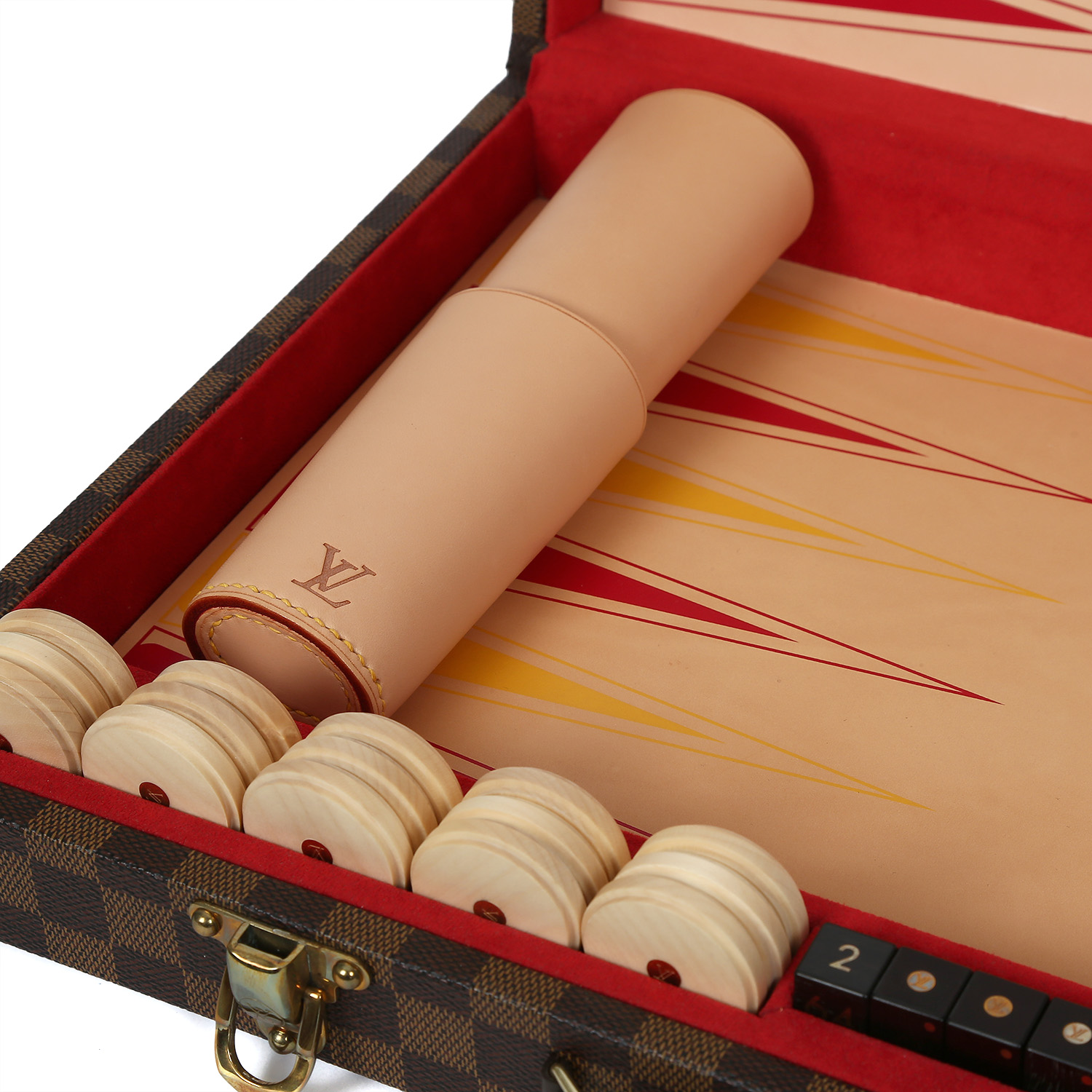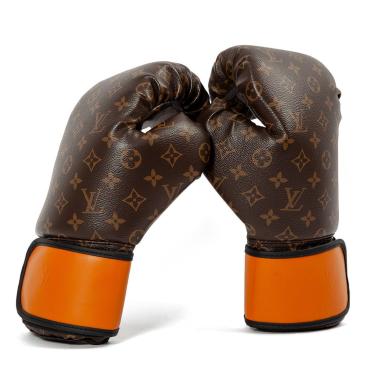Collectables Louis Vuitton
-
Louis Vuitton, Rare mini-Malibu surfboard - spring-summer collection of 2018
9,850 €
-
Louis Vuitton, «Giant Volleyball» ball and handbag with pink and orange monogram, summer 2020 collection
1,850 €
-
Louis Vuitton, game "Visionaire 30" Australia edition, box in monogrammed plexiglass, with complete documentation and puzzle, from 2000
This item is no longer available
-
Louis Vuitton, "Groom", doll, in cotton, acrylic and polyester, with two iconic bags of the brand, monogrammed, in its original box, from the 2000's
This item is no longer available
-
Louis Vuitton, "Vivienne" music box, in brown monogram canvas and black leather, finishes in brass, inside in microfiber, signed, of 2018
This item is no longer available
-
Louis Vuitton, 2018 World Cup ball in beige natural leather
This item is no longer available
-
Louis Vuitton, Box flaconnier (for bottles of scent), in Monogram canvas, natural cowhide, canvas, wood and gilded metal, from 2020's
This item is no longer available
-
Louis Vuitton, Cigar box, "Voyage" model - 2000s
This item is no longer available
-
Louis Vuitton, Cigar case, in mahogany wood, the outside covered with a cognac epi leather, interior lined with cedar, with its original key
This item is no longer available
-
Louis Vuitton, "Voyage" ("Travel") cigar case, in mahogany wood, Macassar ebony veneer and touches of pear tree, signed and monogrammed, from the 2000's
This item is no longer available
-
Louis Vuitton, Rare paperweight, in Monogram canvas, finishes in natural cowhide and gilded metal, limited edition, of 2018
This item is no longer available
-
Louis Vuitton, paperweight "Voguez volez voyagez", in engraved aluminum with Monogram decoration and leather, from the 2010's
This item is no longer available
-
Louis Vuitton, cigar case, for 150 cigars, in mahogany wood, Macassar ebony veneer and pearwood inlay, from the 2010's
This item is no longer available
-
Louis Vuitton, three watches case, in Taïga leather, finishes in smooth leather and silvered metal, microfiber lining, from the 2020's
This item is no longer available
-
Louis Vuitton, "World Cup 98" football ball, in brown monogram canvas and natural leather, sport accessory, limited edition, signed and numbered, of 1998
This item is no longer available
-
Louis Vuitton globe in plexiglas
This item is no longer available
-
Louis Vuitton, Jeu Backgammon - circa 2020
This item is no longer available
-
Louis Vuitton & Karl Lagerfeld, Pair of boxing gloves - Collection 2014 (HS code : 4203210000)
This item is no longer available
-
Louis Vuitton, "World Cup 98" football ball, in brown monogram canvas and natural leather, sport accessory, limited edition, signed and numbered, of 1998
This item is no longer available
-
Louis Vuitton, Skimboard - 2022
This item is no longer available
Collectables Louis Vuitton
Vuitton is a brand founded in 1854 by luggage-maker Louis Vuitton. His flat leather trunks – which revolutionised travel at the end of the 19th century – helped ensure the reputation of the Vuitton trademark beige and brown checks. This was launched in 1888 and later adapted into azure checks.
However it was only in 1896 that the famous Vuitton canvas – a high-quality impermeable canvas comprising a warp and weft made from cotton and flax and coated with PVC – was developed to partially replace leather. It that same year, the ultimate Vuitton print was released – the LV Monogram. Originally ebony (beige and brown), it is now produced in several materials: Idylle canvas, Multicolore canvas, varnished leather, stamped leather and Mahina leather.
When Bernard Arnault took over LVMH at the end of the 1980s, he decided to expand the Vuitton range to include prêt-à-porter collections and accessories including shoes, watches, jewellery, fragrances, and even more recently coffee-table books and travel guides.
From a stylistic perspective, however, the brand really took off in 1997 with the appointment of Marc Jacobs as artistic director. From 1998, this New York fashion designer, known for his elegant yet relaxed style, created collections of prêt-à-porter and shoes which revived the brand, without losing its identity.
This established Vuitton as a distinct fashion brand, selecting its ambassadors from among the most famous celebrities, including Madonna, Jennifer Lopez, Keith Richards, Mohamed Ali and Angelina Jolie, and commissioning famous international artists to design new versions of its products. The first of these was Stephen Sprouse, an artist and fashion designer famous for a style combining chic sophistication with street style. He collaborated with Marc Jacobs on the design of the Graffiti line of handbags in 2001.
In 2002, illustrious English designer Julie Verhoeven was chosen to work with Marc Jacobs on the design of a handbag collection – the Contes de Fées collection.
A Monogram Multicolore line was also launched in 2003, following a collaboration between Marc Jacobs and Japanese artist Takashi Murakami, in a style inspired by Manga. This "capsule" line – meaning intended as a one-off, like the previous collaborations – ended up joining Vuitton’s traditional lines due to its great success. This collaboration with Takashi Murakami was revived in 2005 for the creation of the Monogram Cerises capsule line.
In 2007, Marc Jacobs called on appropriation artist Richard Prince for a collaboration which resulted in a fabric using superimposition and transparency of logos – the Monogram Pulp canvas.
In 2012, it was the turn of Japanese artist Yayoi Kusama to work alongside Marc Jacobs to create the Dots Infinity capsule line, alluding to her obsession with dots.
Bernard Arnault, Chairman and CEO of LVMH, meanwhile decided to promote art and culture. This led to the opening of the Espace Culturel Louis Vuitton on Rue Bassano in Paris in 2006, a space paired with the Vuitton shop on the Champs-Elysées and exhibiting contemporary artworks relating to the theme of travel. In the same year, Bernard Arnault announced the launch of a similar project on a much larger scale: the creation of a Louis Vuitton Foundation for art and culture. The creation of the future building to house this foundation in the Jardin d’Acclimatation, a zoological garden in Paris, was entrusted to famous architect Frank Gehry and it is due to open in 2014.
Today, the Vuitton brand has around 460 shops or global stores in 50 of the largest cities in the world, acting as an ambassador for French luxury. Its annual turnover in 2012 was around 7 billion euros, corresponding to more than half of the LVMH group’s profitability. Its operating margin of around 45% is the largest in the luxury sector.
Furthermore, while the Vuitton brand is attracting an increasing and ever more diverse clientele, the brand’s greatest success is currently among Japanese and Chinese luxury consumers, despite an exceptional dip in growth to 6 or 7% in 2012, due to the general economic climate.
The Speedy – a great Vuitton classic which is now an it-bag.
Created by Vuitton in 1933, the Speedy bag is available in four different sizes: 25cmx19cmx15cm, 30cmx21cmx17cm, 35cmx23cmx18cm and 40cmx25cmx19cm. This elegant bag, both timeless and practical, is the ideal accessory for all occasions (parties, travel, etc.)
It has rounded leather handles and sometimes even a strap, making it possible to alternate between carrying it in the hand or on the shoulder. It has a zip fastener and a padlock and textile lining for greater security. The Speedy’s main strength is its ample capacity, whatever the model size. As with most Vuitton bags, a brass ring allows the bag to be customised by adding internal pockets fitted with lobster claw clasps. The Speedy model generally also contains a small internal open patch pocket. Depending on its size, the Speedy model is available in several materials particularly including Monogram, Monogram Azur and Monogram Multicolore canvas, azure checked canvas and Epi leather.
14-days return policy
Recently viewed
Explore
Our most sought-after ranges
by brand, collection or category.
Collector Square authentication and Louis Vuitton date code guide
Collector Square offers you more than 500 Louis Vuitton bags, which, after having been carefully selected for their perfect condition and desirability, are appraised and authenticated by our expert Jérôme Lalande, renowned for his expertise in fine leather goods. Jérôme Lalande has worked with several auction houses for over twenty years, including Hermès.
Unlike Chanel handbags, which have a serial number, Louis Vuitton handbags have a date code, just like Hermès handbags.
Louis Vuitton handbags have a date code stamped on an inside label or on the inside lining of the product.
This code makes it possible to precisely identify the place and year of its manufacture. The latter concerns Louis Vuitton handbags that have been manufactured since the late 1980s.
The majority of date codes are made up of a combination of numbers and letters. The numbers indicate the year and month of manufacture (as well as the week for the most recent models) and the letters indicate the country in which the Louis Vuitton bag was made:
- Before the early 1980s : no date code for Louis Vuitton handbags.
- Early 1980s : the date code has three or four digits. The first two digits indicate the year of manufacture and the last digit(s) the month.
For example, the date code "852" indicates that the Louis Vuitton bag was manufactured in February 1985. - From 1990 to 2006 : the two letters precede the numbers, for which the reading configuration has been changed. The first and third digits indicate the month and the second and fourth digits the year of manufacture.
For example, a code "DR1025" indicates that the Louis Vuitton handbag was made in France in December 2005. - Since 2007 : the two letters are followed by four digits with a change in reading; the first and third digits indicate the calendar week and the second and fourth digits the year of manufacture of Louis Vuitton handbags.
For example, the date code "MA2088" lets you know that the Louis Vuitton bag was made in Italy, in the 28th week of the year, in July, in 2008.
| France | A0, A1, A2, AA, AAS (Special Order), AH, AR, AN, AS, BA, BJ, BU, DR, DU, DR, DT, CO, CT, CX, ET, FL, LW, MB, MI, NO, RA, RI, SA, SD, SF, SL, SN, SP, SR, TA, TJ, TH, TN, TR, TS, VI, VX |
| Germany | LP, OL |
| Italy | BC, BO, CE, FO, MA, NZ, OB, PL, RC, RE, SA, TD |
| Spain | BC, CA, LO, LB, LM, LW, GI, UB |
| Switzerland | DI, FA |
| USA | FC, FH, LA, OS, SD, FL, TX |
Note that Louis Vuitton handbags with a suede lining can sometimes be harder to read and in some cases the date code may even have disappeared. This can also be the case for antique Louis Vuitton handbags, or if they have been "aggressively" cleaned.
